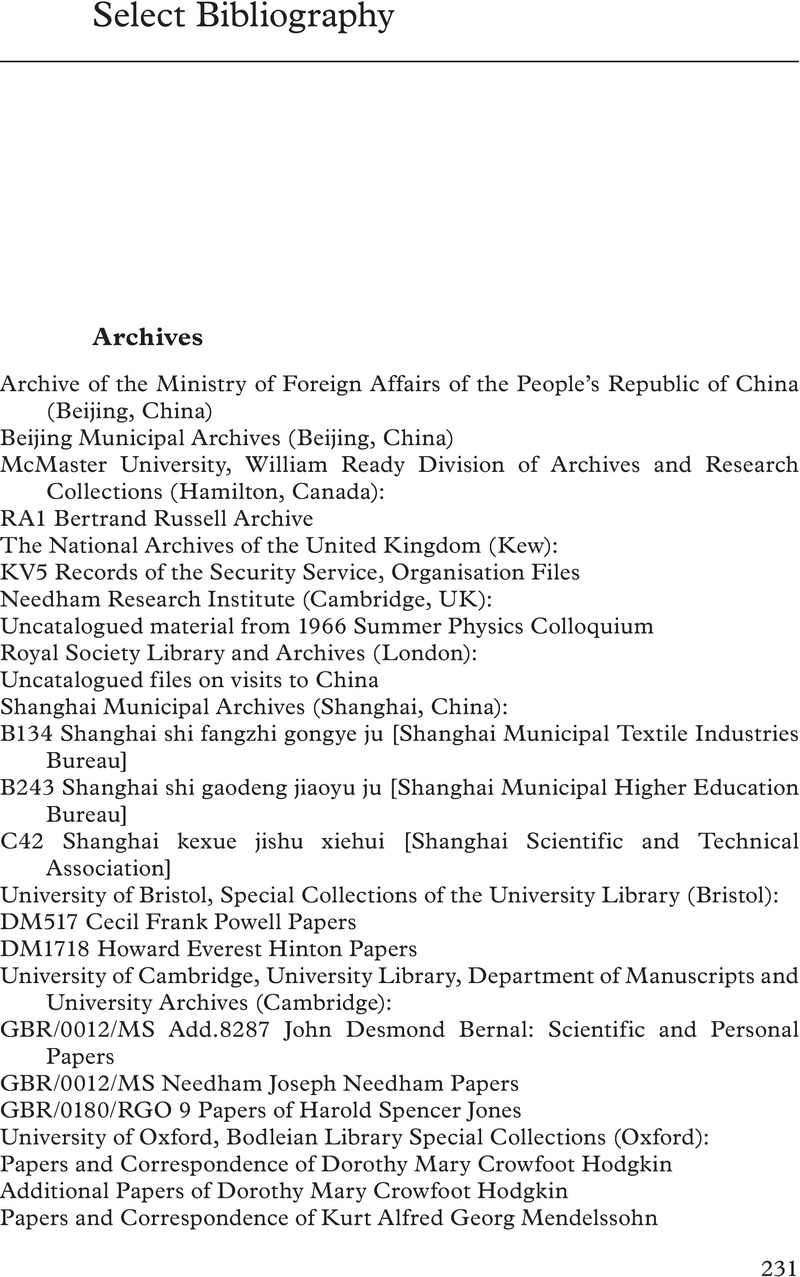Book contents
- China’s Cold War Science Diplomacy
- China’s Cold War Science Diplomacy
- Copyright page
- Dedication
- Contents
- Tables
- Acknowledgements
- Note on the Text
- Abbreviations
- Introduction
- 1 A Scientific United Front at Home and Abroad
- 2 Between Pugwash and the Party-State
- 3 ‘Friends and Comrades, We Fight against Imperialism’
- 4 Linking the Local, National, and International
- 5 A Spectrum of Propaganda and Scientific Exchange
- Conclusion
- Select Bibliography
- Index
- References
Select Bibliography
Published online by Cambridge University Press: 18 August 2022
- China’s Cold War Science Diplomacy
- China’s Cold War Science Diplomacy
- Copyright page
- Dedication
- Contents
- Tables
- Acknowledgements
- Note on the Text
- Abbreviations
- Introduction
- 1 A Scientific United Front at Home and Abroad
- 2 Between Pugwash and the Party-State
- 3 ‘Friends and Comrades, We Fight against Imperialism’
- 4 Linking the Local, National, and International
- 5 A Spectrum of Propaganda and Scientific Exchange
- Conclusion
- Select Bibliography
- Index
- References
Summary

- Type
- Chapter
- Information
- China's Cold War Science Diplomacy , pp. 231 - 244Publisher: Cambridge University PressPrint publication year: 2022

